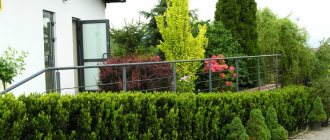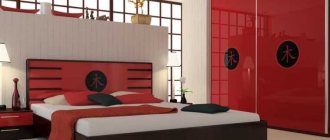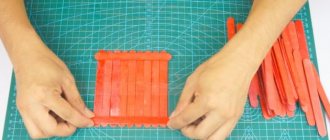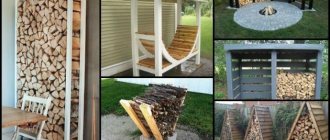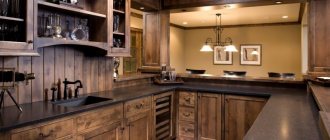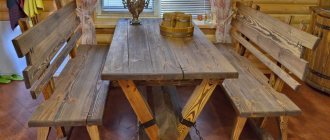DIY bonsai
Experts and landscape designers recommend growing bonsai with your own hands from both coniferous and deciduous trees, the most common representatives of which are pine and maple; lilac, rose, and wisteria are a little less common. Growing bonsai from such crops is simple and requires minimal care.
Money tree bonsai is perfect for growing in the middle zone
Seed selection
Many plant growers are interested in how to grow and form bonsai from seeds at home to get a beautiful tree. The growing process takes several years; first, proper care is provided for the seeds, seedlings, and only then for the tree, and it is not always possible to grow it from seeds the first time.
When growing bonsai on the balcony, you should choose tropical plants: coffee tree, laurel, dracaena. Without experience, you will still be able to get a ficus bonsai due to the unpretentiousness of the plant. If you have even the slightest idea about the essence of the procedure, you can plant a pine tree, which grows slowly, but in the end it turns out to be a beautiful tree.
Selection of pot
Any container can serve as a pot for a bonsai plant - wooden, stones with a recess, clay, but it is better to give preference to ceramic pots. The basic rule when choosing the shape of a container for bonsai is that it should not be more beautiful than the plant. For tree crops, earthenware with different shades is suitable, for flowering crops - ceramics or clay of the appropriate color.
Note! Watering depends on the material of the pot; for example, a plant in a clay pot needs to be watered more often than in a ceramic one.
A bonsai pot made of any material should be spacious. The diameter of the round container should be 3 times the diameter of the trunk, and the depth should be about half the height of the tree. Pots of non-standard shape have a width of approximately 2/3 of the tree crown. Moreover, strict adherence to the size of the pot is required only for adult plants.
Priming
For coniferous trees, the soil is prepared drier and contains sand, flowering and indoor varieties - an organic substrate. In any case, the soil for bonsai varieties should be easily permeable to moisture and have a drainage system.
Sand from the banks of reservoirs, fine and crumbly, works well. Construction sand with a high lime content is not suitable for planting bonsai.
Important! To neutralize the soil from the fungus, you need to heat it in the microwave for about 5 minutes.
Do I need to fertilize bonsai?
Since trees are grown in relatively small pots, they need feeding, especially during the growing season. The optimal fertilizer for bonsai should contain nitrogen, phosphorus, and potassium, which are contained in almost all fertilizers, but for different plants it is worth considering their proportions.
Feeding with fertilizers begins in early spring and continues until mid-autumn. Indoor species can be fertilized all year round.
Step-by-step algorithm for applying dry fertilizing:
- Sprinkle on the surface of the soil around the plant.
- Pour plenty of water on top.
Important! It is necessary to fertilize bonsai, but given the limited amount of soil, strictly in recommended doses so as not to harm the plant.
Where to begin
Growing begins with the need to germinate bonsai seeds, which should be treated against pests and diseases. The period depends on the plant, some will take more than five years. You can reduce the germination time by breaking the seed coat to facilitate germination.
The art of bonsai, how to grow a bonsai tree, a detailed guide
Growing a miniature tree is a rather lengthy process that requires patience and certain knowledge. Bonsai can be grown from a twig or tree branch, first rooted in water, or by planting seeds. When the seed sprouts and grows a little, you can start planting.
For this you will need:
- A pot, not deep, similar to a plate or not a deep bowl, at the bottom of which you need to put a plastic mesh.
2. Soil - buy special soil or mix garden soil with sand and peat in a ratio of -2:1:1
3. Seeds or seedlings of the selected tree
4. Wire and pliers to shape the tree
Having decided to diversify your home flower garden with a tree in a pot, we choose the type of tree. It can be pine, maple, spruce, oak. The least common are birch, cherry, apple, and viburnum. Bonsai can be grown from almost any tree.
Growing from seeds
We buy it in the store or assemble it ourselves. Not all seeds can be germinated at once. Some require some preparation. The seeds of juniper, hornbeam, maple, and quince should be placed in the sand and watered. Keep moist. This is called the rest period, which can last up to six months. There are seeds that can be planted immediately after collection, these include tree seeds - fir, pine, euonymus, oak, beech.
First, soak the seeds, you can use vermiculite.
Vermiculite has the ability to absorb moisture and is not subject to rotting or the influence of unfavorable factors. They can be used to dilute the soil to retain moisture.
After germination, we begin planting. To do this, we buy peat pots in the store.
We fill them with a mixture of sand and peat; you can use the soil for cacti. When pouring the mixture, leave three centimeters on top. Fill another centimeter with the same mixture, but sifted. We plant a seed, press down the soil with a piece of wood, moisten it and cover it with film.
If you choose tropical seeds for planting, leave them on the surface and do not sprinkle them with soil.
We are looking for a place for the pot where there will be no direct sunlight. After emergence, we make holes in the film to allow air to enter. When the leaves appear, we open our seedlings and place them in a sunny place. After reaching a height of 10 cm, we begin picking and shorten the roots before planting.
Growing from seedlings
Cuttings for root germination can be taken from any tree. To do this, we select younger branches that are untouched by diseases and not damaged by various pests. We cut the cuttings obliquely to increase the area for moisture absorption. We place the cuttings in an opaque container filled with water. After the roots have sprouted, we begin planting.
To form the desired shape, we wrap the trunk and branches with wire.
Before you start shaping the crown, choose a style:
Tekkan - the trunk is straight, the crown is wide at the bottom, narrowed at the top.
Moyogi is the most common style. The trunk has a curved shape. There can be several bends, the most important thing is that the top is always above the base.
Shakan - has an inclined shape. Symbolizes the desire for the sun.
Sokan - characterized by branching of the trunk, the effect is achieved by forming one branch as a daughter trunk.
Kengai is a style that symbolizes a tree that, adapting to natural conditions, seems to be hanging from a cliff.
Bujingi is a complex style, characterized by the absence of branches at the bottom of the tree.
Fukinagashi - resembles a tree standing on the seashore, on which the wind blows.
Yose-ue is a forest composition that consists of independent tree trunks of the same species.
Hokidachi is an upright tree, the peculiarity of which is its branching from one point.
Shokijoju is a tree that grows on rocks. Its roots look for any crevice where they can penetrate in search of water and nutrients.
Ishizuki is a spectacular style that shows a tree growing in a rock crevice.
Kabudati - several trunks grow from one root system.
Ikadabuki - symbolizes a tree that fell into a swamp and adapted to the environmental conditions.
Sharimiki - wood is aged artificially by removing the bark.
After our tree is planted and established, we trim the branches annually.
Crown shapes
Automatic watering for indoor plants - do it yourself
Shapes (styles) of crowns for bonsai:
- fan;
- formal vertical;
- informal vertical;
- inclined;
- cascade;
- semi-cascade;
- Bohemian;
- tree bent by the wind;
- double barrel;
- multi-barreled;
- grove or group planting;
- roots on a rock;
- tree on stone;
- fallen tree;
- dead wood.
When does a plant need to be replanted?
DIY drainage for indoor plants
If the bonsai grows in open ground, it does not need to be replanted, but in a limited volume, replanting is necessary so that the roots do not intertwine. This procedure is considered planned, that is, it occurs regularly at a scheduled time and depends on the age, size of the tree and pot, as well as the type of plant and nutrient soil.
For your information! Young plants, no older than 4 years, are replanted every spring, when the growing season begins, adult plants - once every 10 years. The signal for replanting is roots sticking out of the drainage hole and leaves starting to fall off.
There is another type of transplantation - emergency, it is carried out when the plant is sick or the roots have rotted.
Juniper bonsai
Available for cultivation by both experienced growers and beginners. This bonsai does not need frequent watering in winter, and there are no special requirements for humidity, temperature and lighting. Unpretentiousness is its advantage.
DIY drip irrigation for indoor plants
In winter, the tree needs rest more than watering, and therefore the soil should dry out during this period. Despite the unpretentiousness of maintaining a juniper bonsai, the tree requires little attention and minimal watering.
For your information! The soil is checked every day using toothpicks. By lowering the stick 1.5 cm into the soil and holding it for 10 minutes, you can determine how dry the soil is. If the removed stick becomes wet, watering should not be carried out; if it is dry, it means that it is time to water the plant.
Juniper soil for bonsai is no different from soil for other species, but the plant, even during the winter period of inactivity, cannot do without sunlight. In winter, 4 hours of exposure to sunlight will be enough for juniper.
Feeding juniper
Juniper, like many representatives of the Cypress family, is unpretentious to the soil, but in some cases it needs fertilizing. Young trees, as well as those transplanted due to their weakness and susceptibility to diseases, need fertilizer, which is applied throughout the season, starting a month after transplantation. Different varieties of juniper require different types of soil. Peat and sand mixed with wood shavings are added to an acidic environment, and slaked lime is added to an alkaline environment.
Fertilizer application
How to make a juniper bonsai: crown formation
The crown is formed using wire. The main rule is not to get carried away and remember that the tree is constantly growing, therefore, you need to boldly remove interfering shoots and follow the wire on the soft structure of the trunk.
How to make a bonsai: practical recommendations
There are some recommendations for creating a bonsai.
Those who want to create a beautiful composition with their own hands can use the following green spaces as a basis:
- Sprouts of common lilac.
- Siberian larch.
- Pine.
- Siberian spruce.
- Juniper sprout.
- Kalina.
- A cob of azaleas.
- Bobovnik.
- Low almonds.
- Ussuri pear.
- Purple barberry.
- Varietal mock orange and others.
Garden ficus, low almond, and Jerusalem artichoke have also proven themselves well. You need to start by choosing a suitable container with humus. An ordinary flower pot will do. When choosing a soil, it is worth studying its formation. It is recommended that it provides drainage and retains the minimum required amount of moisture.
You can buy a pot at any flower shop. But if you want it to be exclusive, it is better to make it yourself. Read more about this in our article:.
According to these criteria, sand, clay and humus are taken in equal parts. To plant a tree, you will need pruning shears to form the crown line, a spatula, sticks, a sieve, and a watering can. Spraying is carried out with a spray bottle. If there is a specialized store in the locality, then the seedling is bought there.
After this, the bonsai is grown to the required size. Further, depending on the plant variety, crowns are formed at a certain time. If time and experience allow, you can create a bonsai from purchased seeds, each type of which requires certain conditions. Another possibility to make a flower arrangement is to use offsets, cuttings and indoor plants.
Ficus bonsai
The choice of ficus is quite reasonable, because it is distinguished by branched roots, a massive trunk with a bend or floridity, beautiful smooth or textured bark and fast growth, and therefore is well suited for growing in miniature and is easy to shape. Ficus is not demanding of sunlight; morning sun rays are more suitable for it, while daylight can cause leaf burns.
Ficus benjamina bonsai
What types of ficus are suitable for bonsai?
Among the ficus varieties suitable for such growing are Bengal, rusty red, blunted and Benjamin. It is best to grow bonsai from the latter species, which has all the characteristics for obtaining a dwarf tree: small leaves, fast growth, beautiful roots and bark.
Shape selection
Bonsai differs from an ordinary plant not only in its miniature size, but also in the shape of its trunk, giving the impression of a century-old tree. The classic form, without branches at the bottom and bends, grows upward. The irregular upright style is characterized by a small crown that does not extend beyond the pot and a curved trunk. The leaning form can lean at any angle and have roots on the surface. The forked form of bonsai involves the growth of two trunks from one root.
A Practical Guide to Shaping a Ficus Tree
The process of shaping a ficus bonsai consists of processing the roots, crown and trunk. In order for the tree to grow in width, the roots of a young plant must be cut until the thickening of the trunk is noticeable. Then, armed with sharp scissors, you need to trim the leaves along with the stems. Pruning is carried out in spring and summer, and in winter, when the plant gains strength, it is better not to disturb it.
Next, a trunk is formed using wire. The garter is suitable for bending the tree, and the frame wrapping helps strengthen the branches for the desired shape.
Note! When making a frame that lasts for two months, you cannot wind the wire very tightly to avoid it growing into the trunk. It is not recommended to put on the frame immediately after planting the plant; you need to wait a few weeks.
Beads to work
Bonsai can also be assembled from beads. To do this you will need a lot of thin wire and beads. Moreover, you can take cheap Chinese beads, which differ in size from each other, this will not play a big role, since you just have to collect a certain number of beads and simply twist the wire, thereby directing the branches in the order you wish.
Related article: Crocheted bags - 28 interesting photo ideas
At the end of the work, all the “branches” are twisted into one trunk. They are masked with adhesive paper tape and the same plaster with glue is applied on top and painted to resemble tree bark.
Money tree bonsai
It is possible to make bonsai from Crassula, which is large in size, even in small spaces. This plant is well suited for bonsai techniques, with which you can get a compact plant with an original shape.
Description of Crassula and types for bonsai
Crassula, or money tree, reaches 1.5 m in height. It has thick stems about 20 cm in diameter. The plant is valued for its low maintenance requirements and decorative gray-green leaves of various shapes.
Hydrators are located over the entire surface of the leaf. There are 350 species of Crassula found in nature; indoor trees are divided into tree-like and creeping. The miniature tree technique uses tree-like crassulas.
Preparation of planting material
The trees do not exceed 200 cm in height and have a thick, curved trunk, like that of an adult tree, so before planting the money tree must be properly pruned and then the shape of the crown must be maintained.
Planting a plant in a prepared substrate
For a money tree bonsai, the soil should be well-drained, contain peat and fertilizer for rapid growth of leaves. You can buy ready-made soil; a substrate for cacti is perfect.
The container for bonsai must be chosen wide and shallow in view of preliminary trimming of the roots to the shape of the pot. When planting, do not deepen the root collar. At the end of replanting, the plant must be watered thoroughly.
Crown formation
In order for a Crassula tree to become a real decoration, it is necessary to prune it correctly, protect it from sunburn and form the trunk in a timely manner. It is better to grow miniature crassula from a sprout, then it will be easier to create the desired style. But in any case, the plant is subject to certain rules for the formation of the crown, giving it the necessary harmony, combined with a natural appearance.
Formation of the Crassula crown
Making from cold porcelain
To prepare cold porcelain, starch and PVA glue are used , but since this is a long and difficult process, it is better to buy a ready-made mass that will be enough for the entire tree. Unlike beaded bonsai, you will have to mold each leaf by hand.
First, the frame is formed. To do this, you need to take a wire 1 mm thick, cut it into pieces of the required length and, twisting them together, form a trunk and branches. You will need a lot of wire. Then you need to wrap the wire with a plaster bandage and water, giving the tree a realistic look. The barrel must be placed in a suitable container and filled with alabaster, then covered with paint.
To make the crown you will need cold porcelain leaves. Leaves will need to be made from it and glued to the branches before the porcelain hardens. You can make the leaves in advance and dry them, then attach them with a glue gun.
Bonsai carmona - the most popular plant
Carmona is most widespread among plants formed using the miniature tree technique. The popularity of this tropical plant is facilitated by the lack of specific methods of keeping it at home and its attractive appearance.
Why Carmona is suitable for beginners
Carmona bonsai is an evergreen bush or tree with shiny dark green leaves, blooming several times a year, bearing bright small berries, great for beginner bonsai growers due to its unpretentiousness and ease of growing.
Unpretentious plant for bonsai
Carmona can grow in shady places, it only needs a few hours of sunlight a day, and in the right light it blooms all year round. Due to its resemblance to the tree, carmona is chosen by many bonsaiists.
Temperature and lighting
Carmona is a tropical plant, and therefore is thermophilic, but can withstand temperatures up to 10°C. In winter, carmona needs to be provided with at least an hour of sunlight.
Growth rate
Along with the azalea bonsai, carmona will grow for several years and with proper care you will be able to get a beautiful bush.
Bonsai carmona
Earth mixture
You can transplant carmona into bonsai soil by choosing a clay substrate, made yourself from garden loam, and you can also use heather, turf, leaf soil, or buy ready-made soil.
Note! Carmona can also grow in an inorganic substrate, but subject to constant feeding. It is important that the soil does not contain lime, which can lead to plant diseases.
Types of karmona for indoor cultivation
For miniature equipment, the cultivation of highly branched small trees, reaching a height of up to 4 m and growing up to 70 years, is excellent, of which the most popular are small-leaved carmona or large-leaved carmona. The maintenance of such plants, which bloom year-round at room temperature, is no different from caring for myrtle bonsai.
Correction and shaping of an adult tree
When the trunk of the ornamental tree becomes dense enough, the bonsai will take on the appearance of a mature tree. This takes a lot of time, during which the plant requires constant care. All its parts need correction:
- Trunk. There are several ways to make a strong foundation. The barrel is alternately tilted in different directions, which leads to its slight deformation. At the site of damage, active mass growth occurs. For a smooth, elongated base, use tight wire wrapping.
- Leaves. Removing old large leaves is necessary to obtain a neat green crown. Defoliation is carried out once a year. Almost all leaves are removed at the petiole level, leaving two leaves at the end of the branch. After a couple of weeks, a young bud forms in this place.
- Roots. Only the tips of the roots are trimmed when replanting. At the cutting site, young branching roots are formed, which increase the absorption of nutrients from the soil. Removal of the main taproot results in the development of a large number of superficial growths.
- Branches. Prune in winter during the dormant period. It is better to trim flowering plants in the fall to ensure the numerous formation of flowers next summer on young branches. Removal of part of the branches is carried out to the point where the outermost bud forms.
Ammania - bonsai in an aquarium
Ammania, or rotala indica, is a plant with green leaves with pink tips. The aquarium serves as a pot for bonsai - a mix of breeding indoor fish and house plants. Both a regular and a nano aquarium are suitable for cultivation. Ammania bonsai often looks like a thick carpet and is a favorite plant for aquarium design.
Conditions and care for ammania
Ammania is a fragile plant that is not recommended for planting in an aquarium with large fish, otherwise they may damage the bonsai. How to accelerate growth? The solution is to supply more carbon dioxide.
Bottom substrate
Sand of a fine and light fraction of no more than 3 mm with a nutritious substrate, which is ideally fertilized with iron, is suitable as soil for ammania. You can take ready-made nutrient soil for bonsai. Ammania will bloom singly in four tiny cups.
Water temperature, hardness and lighting
The annual plant is adapted to the usual parameters of fresh water, where the pH is 6.0-7.5 and the hardness is from 3 to 8. The ideal water temperature is no more than 28 °C, but not lower than 22 °C. For normal growth, it is necessary to organize lighting with a full spectrum, and with weak light the stem and leaves will stretch. The bonsai shoot needs to be provided with strong light of 1 V per 1 liter of water.
Ammania cuttings
Ammania bonsai is not grown with seeds due to special growing conditions, so it requires special care and propagation. Further growth depends on proper cuttings, so it is necessary to pinch off the fleshy main trunk of the plant with narrow leaves located on it. By carefully cutting the cutting and placing it in the substrate, roots will appear on it, after which you can plant it in the prepared soil. Planting occurs with compaction into the substrate, but without pressing down the roots.
Ammania cuttings
Growing living decorations is a fascinating, but difficult activity. Sometimes this takes several years. That is why, in the first couple of years, it is important to decide on the type of plant and the features of its care, so as not to suddenly ruin many years of work with incorrect actions.
